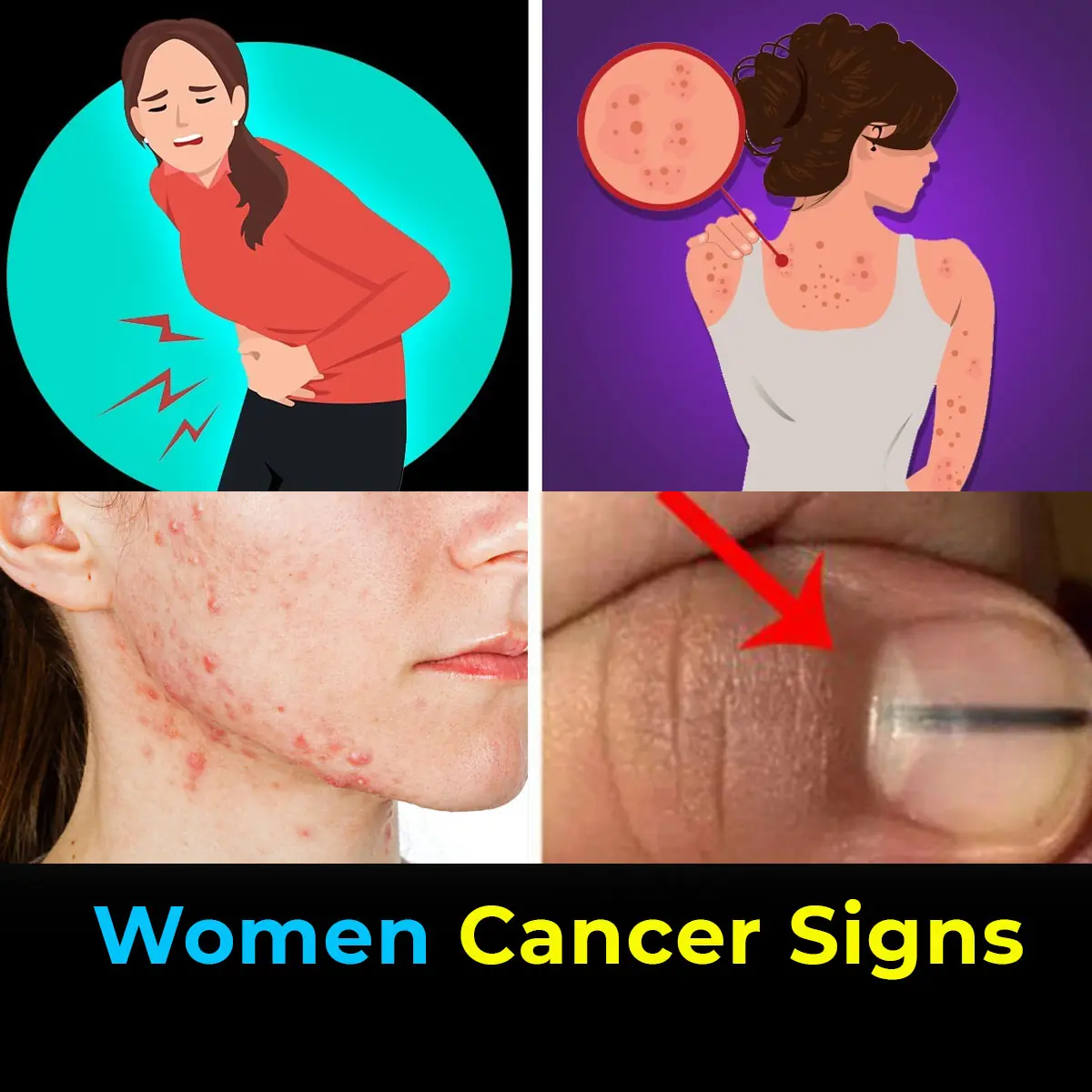
Wrinkles Aren’t Just a Sign of Aging – Here’s What’s REALLY Causing Them
When people think of wrinkles, the first thing that usually comes to mind is aging. It’s a natural assumption, given that wrinkles typically become more visible with time. However, recent research and deeper understanding of skin health have revealed that wrinkles are not merely the result of growing older. In fact, several surprising factors can contribute to premature wrinkles, and some of them are entirely within our control.
First, let’s understand what a wrinkle is. A wrinkle is a fold or crease in the skin that forms when the skin loses its elasticity and volume. As we age, our bodies produce less collagen and elastin—two proteins responsible for keeping the skin firm and smooth. Naturally, this process does lead to wrinkles. But aging alone doesn’t fully explain why some people develop deep wrinkles in their 30s while others have relatively smooth skin into their 60s.
One of the biggest culprits behind premature wrinkles is sun exposure. Ultraviolet (UV) rays from the sun damage the skin at the cellular level, breaking down collagen and elastin fibers faster than the body can repair them. This type of damage is called photoaging. People who spend a lot of time outdoors without proper sunscreen are much more likely to develop wrinkles early, especially on the face, neck, and hands. Interestingly, even short daily exposure, like driving or sitting near a window, can accumulate over time and contribute to skin damage.
Lifestyle choices also play a critical role. Smoking, for example, accelerates the aging process dramatically. It narrows the blood vessels in the skin, reducing blood flow and robbing the skin of oxygen and essential nutrients. Furthermore, the chemicals in cigarette smoke damage collagen and elastin. Smokers often develop deep wrinkles around the mouth, known as “smoker’s lines,” due to both the physical motion of smoking and the skin damage it causes.
Another common factor is repetitive facial expressions. Frowning, squinting, or even smiling can lead to fine lines as the skin forms creases in the same places repeatedly. Over time, especially if the skin is not well-hydrated or protected, these creases can become permanent wrinkles. People who frequently squint may develop crow’s feet around the eyes, while those who furrow their brows often have lines on their forehead.
Poor diet and dehydration also influence skin health. A diet lacking in antioxidants, healthy fats, and vitamins can leave the skin dull and more vulnerable to damage. Hydrated skin is more elastic and resilient, while dehydrated skin is more prone to sagging and wrinkling. Similarly, lack of sleep and high stress levels trigger the release of cortisol, a hormone that breaks down collagen and can speed up wrinkle formation.
Lastly, environmental factors like pollution and blue light from screens can also affect the skin. Pollutants in the air generate free radicals, unstable molecules that damage skin cells and speed up aging. Blue light from phones and computers may not be as intense as UV rays, but prolonged exposure can lead to skin stress and premature aging.
In conclusion, while aging is certainly a natural contributor to wrinkles, it’s far from the only one. Sun exposure, smoking, facial expressions, poor nutrition, stress, and environmental pollutants all play significant roles. The good news is that many of these factors are controllable. By adopting a healthier lifestyle—wearing sunscreen, quitting smoking, staying hydrated, eating well, and managing stress—we can slow down the appearance of wrinkles and maintain youthful skin for much longer. Understanding what really causes wrinkles empowers us to take better care of our skin beyond simply accepting aging as fate.
News in the same category


If Your Legs Cramp at Night You Need to Know This Immediately

Warning Signs Your Body Is Full of Parasites and How to Effectively Eliminate Them Naturally

Warning Signs of a Parasite Infection And How to Eliminate It for Good

What Raw Garlic Can Do for Your Health Is Truly Unbelievable

5 Common Deficiencies That Can Mess With Your Mood, Energy, and Health

Diabetes Tied to Slower Brain Recovery After TBI

Neuropathic Pruritus Has High Comorbidity Burden, Varied Treatment Responses

Unlock Your Body's Healing Potential: The Power of Reflexology for Pain Relief and Wellness

Medicinal Health Benefits of Turmeric, Curcumin and Turmeric Tea Based on Science

How to Use Tea Bags to Fight Acne, Cold Sores, Warts, Puffy Eyes, Bruises and More

Healing Power And Important Safety Tips Of Castor Leaves

How to Treat H. Pylori (Helicobacter Pylori) Naturally Without Antibiotics

12 Warning Signs Your Blood Sugar Might Be Too Low

Be Careful If You’re Farting More Than 25 Times a Day—It Might Be a Sign Your Body is Trying to Warn You

10 Warning Signs Sugar Is Slowly Wrecking Your Body

10 Cancer Warning Signs Women Often Overlook

Breakthrough Male Contraceptive Injection Offers Alternative to Condoms and Vasectomy

This One Superfood Could Tackle Major Health Issues—Here’s What You Need To Know

Both Mother and Child Died of Liver Cancer – Doctor Warns: Never Add These 3 Ingredients to Porridge
News Post

'Frankenstein' creature that hasn't had s3x in 80,000,000 years in almost completely indestructible

Scientists discover ultra-massive 'blob' in space with a mass of 36,000,000,000 suns

When a Washing Machine Shows 7kg, 8kg, or 10kg, Is That the Weight of Dry or Wet Clothes? The Real Meaning Behind These Numbers Is Something That Few People Know

Place a Bowl of Salt in the Fridge: A Small Trick, But So Effective — I Regret Not Knowing It for 30 Years

If Your White Walls Are Dirty, Don’t Clean Them with Water — Use This Trick for a Few Minutes, and Your Wall Will Be as Clean as New

Bubble Wrap Has 4 Uses 'As Valuable as Gold' — But Many People Don’t Know and Hastily Throw It Away

3 Ways to Prevent Snakes from Entering Your House: Protect Your Family

5 Household Devices That Consume More Electricity Than an Air Conditioner: Unplug Them to Avoid Skyrocketing Bills

How a Common Kitchen Powder Can Help Your Plants Thrive and Bloom

How to Effectively Clean Black Mold from Your Refrigerator Gasket in Just 5 Minutes

10 Early Warning Signs Your Blood Sugar Is Way Too High

If Your Legs Cramp at Night You Need to Know This Immediately

Warning Signs Your Body Is Full of Parasites and How to Effectively Eliminate Them Naturally

Warning Signs of a Parasite Infection And How to Eliminate It for Good

What Raw Garlic Can Do for Your Health Is Truly Unbelievable

5 Common Deficiencies That Can Mess With Your Mood, Energy, and Health

What’s the Small Hole in a Padlock For?

Diabetes Tied to Slower Brain Recovery After TBI

Neuropathic Pruritus Has High Comorbidity Burden, Varied Treatment Responses

